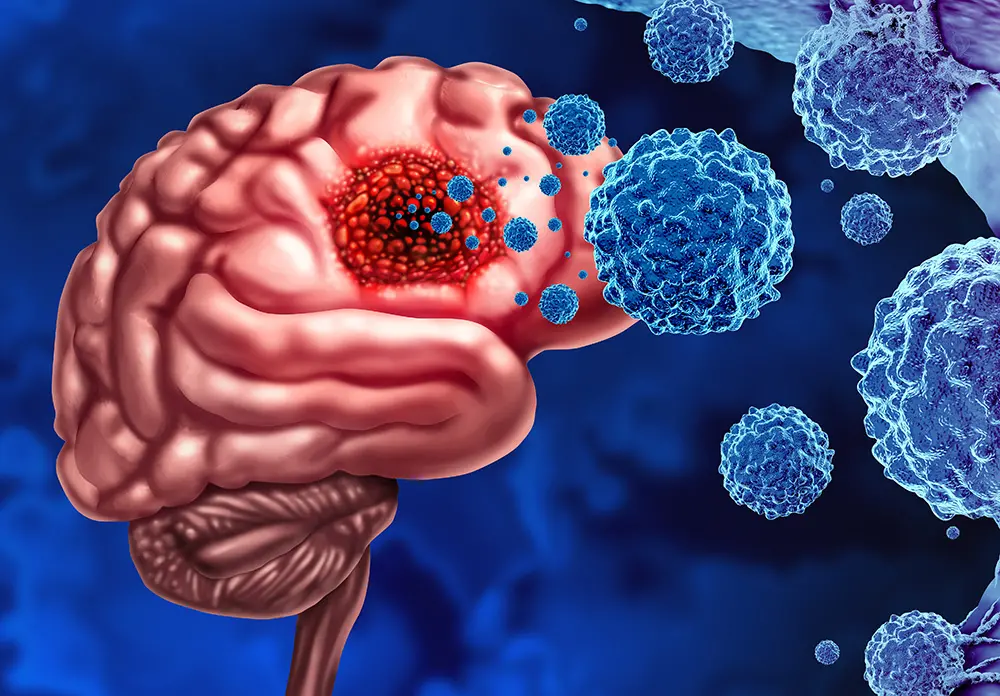The glioma subtype known as glioblastoma is notoriously difficult to treat. Current treatments for glioblastoma are unable to successfully address the heterogeneity between different glioblastoma tumors. The fact is that glioblastomas differ markedly between patients, and even within an individual patient, a glioblastoma does not stay the same. Instead, it mutates over time, making treatment difficult.
Promising new research, however, is aimed at identifying commonalities in glioblastomas and using that information to develop heterogeneity-agnostic treatment that will be effective across multiple glioblastomas. Lead investigator David D. Tran, MD, PhD, chief of neuro-oncology and co-director of the USC Brain Tumor Center, part of Keck Medicine of USC, explains how his team’s work could unlock new hope for glioblastoma treatment.
One of the hallmarks of glioblastoma is its diversity. “One patient’s glioblastoma is different from another patient’s glioblastoma,” Tran says. “Not only that, even when you look at a glioblastoma tumor itself, different regions of a tumor are different as well.”
These differences arise because glioblastomas genetically mutate in a random fashion. “There is really no rhyme or reason why a mutation occurs in one patient and not in another,” Tran says.
For this reason, finding a treatment that can benefit many glioblastoma patients has been elusive. “Even if you develop a therapy to target a mutation in one glioblastoma, it won’t help with another glioblastoma if that glioblastoma doesn’t have the same mutations,” he says.
Not only that, but treating a single patient’s glioblastoma is difficult because the patient’s own tumor will change. “Even if we sequence a tumor and identify a set of mutations specific to that patient, then quickly develop a therapy for the patient in a couple of months, by then, however, the tumor might mutate and no longer be the same tumor it was two months ago — meaning the therapy you developed for this tumor two months ago might not work as the tumor accumulates new mutations,” Tran explains.
“You can almost never predict what the next mutations will be,” he adds. “As physicians, we’re basically just chasing our tail with treatment. That’s why it’s so difficult to treat this tumor.”
Tran hopes this research will lead to the next frontier in glioblastoma treatment: a first-of-its kind, heterogeneity-agnostic gene therapy for treating glioblastomas. It would be a critical advancement given the poor survival rate for glioblastomas today. Currently, the mean survival is less than 15 months, and the five-year survival rate is 5%.
“The ultimate goal of this therapeutic program is to develop and provide a novel, effective, heterogeneity-agnostic treatment option for patients with [glioblastomas], especially recurrent [glioblastomas], who currently have limited therapeutic options and a poor prognosis,” the researchers’ grant description explains.
So far, Tran says their research has shown that “if we are able to deliver the target genes to the vast majority of tumor cells, we can achieve a very high cure rate of even up to 90%.”
For glioblastoma patients facing poor survival rates today, this would make a big difference. “If we can develop any therapy that makes up to 50% of patients survive long-term, it’s a huge success,” he says.
This first-of-its-kind treatment may also one day extend to other types of tumors, too. “Right now, we are going after glioblastomas, which is one of the most difficult tumors to treat,” Tran says. “If we can prove that this technology can be used to treat a very difficult cancer like glioblastomas, it will be proof that it can also be used to treat other cancers as well.”
Learn more about the research and read the article written by Jennifer Grebow from Keck Medicine at USC here.
